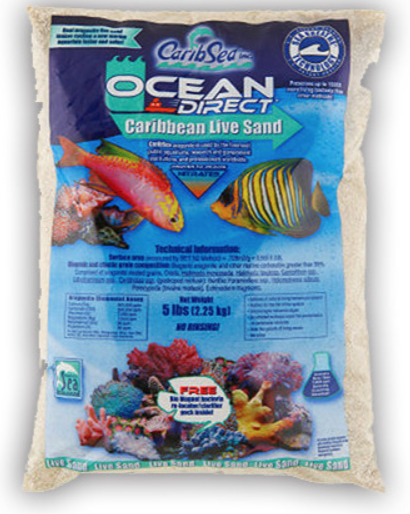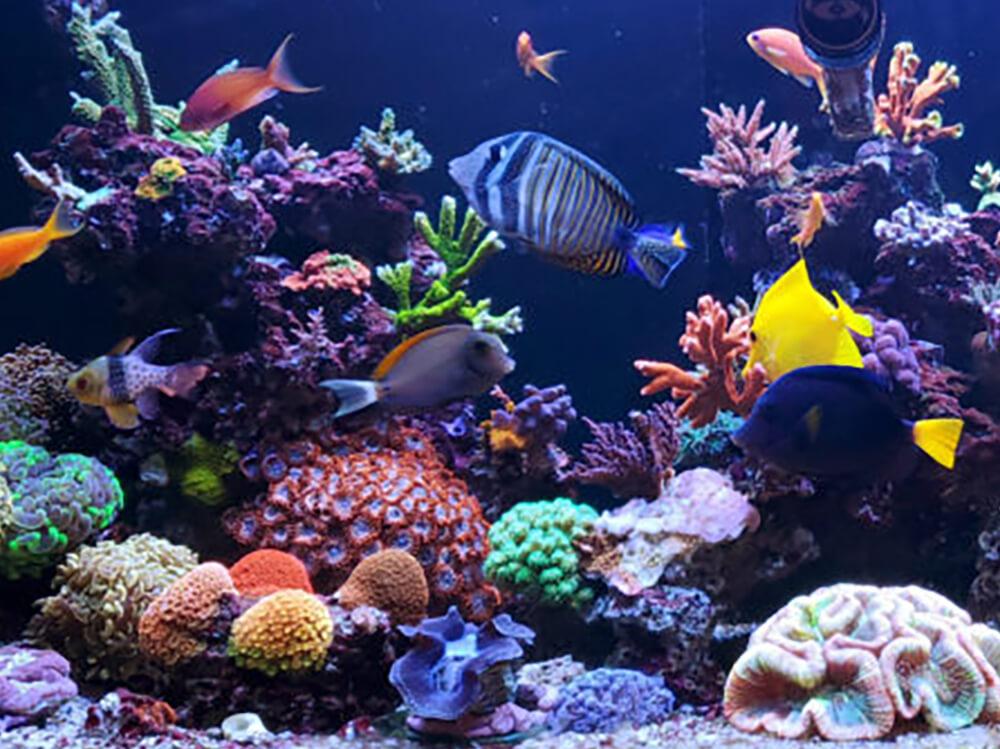Which substrate do I need for my marine tank?
Part of the appeal of a marine aquarium is the bright coral sand base that transports the viewer to a beach on a tropical island. Those white tropical sands are actually coral sand, tiny fragments of long-dead coral skeletons and shells which have been worn down into sand-sized granules.
Its coral sand that you need for your home aquarium too, not normal beach or play pit sand as that contains silicates which cause algae. Coral sand has more uses than just aesthetics too. Being lime-based it releases buffers that help to raise the pH - something that’s important in marine aquaria, and one of the reasons why it shouldn’t be used in standard freshwater aquaria.
It also provides a home for a myriad of microfauna like worms, copepods and amphipods which in turn feed larger fish like wrasses and dragonettes. Some marine fish actually need a bed of coral sand as they are adapted to sift and find food within it, or even to sleep in it and hide away from would-be predators at night.
What aquarium sand is available?
Coral sand varies in size, texture and colour. You can get fine, medium, coarse, or a mixture of grain sizes for a natural look. You can even get black. Aragonite is the best type of coral sand to buy as it has the best buffering capacity, and is available as normal, dry sand or “live.”
Live sand is coral sand or aragonite sand which contains moisture and with it, colonies of live beneficial bacteria. The manufacturers claim that it can help to cycle a new marine tank by seeding the tank with millions of naturally occurring bacteria, so if you have a new reef tank and want it to mature and become its own functioning ecosystem, live sand can help with that.

How much sand do I need for my tank?
There is a balance between having too much sand and too little. You need enough to cover the bottom pane of glass in the aquarium, plus a bit extra so that the base isn’t exposed if the fish start to dig. A layer of 10-30mm is about right. Place the rocks onto the base first and then sprinkle sand around them, so the rocks can’t be undermined and fall over.
Gravel layers around 50mm deep can start to harbour uneaten food and are blamed for excess nitrates, so thin it out or vacuum regularly to prevent dead spots and anaerobic areas in the substrate. A sand layer of 100mm depth is known as a deep sand bed, and that can be so deep that it can actually aid water quality by reducing nitrates, but although popular over twenty years ago a very deep sand bed can take up valuable tank room and be expensive, and there are now lots of other ways to control nitrates which are available in liquid form.
Sand sifters
Vacuum your sand bed regularly to prevent the build-up of dead organic matter. Livestock can help too, like Sand sifting starfish, Nassarius snails, Chalk gobies and Orange spot gobies. Due to the nature of Aragonite, it may dissolve over time, so by adding a thin layer of Aragonite sand every year or so you get a fresh layer of clean white sand but also increased buffering capacity.









